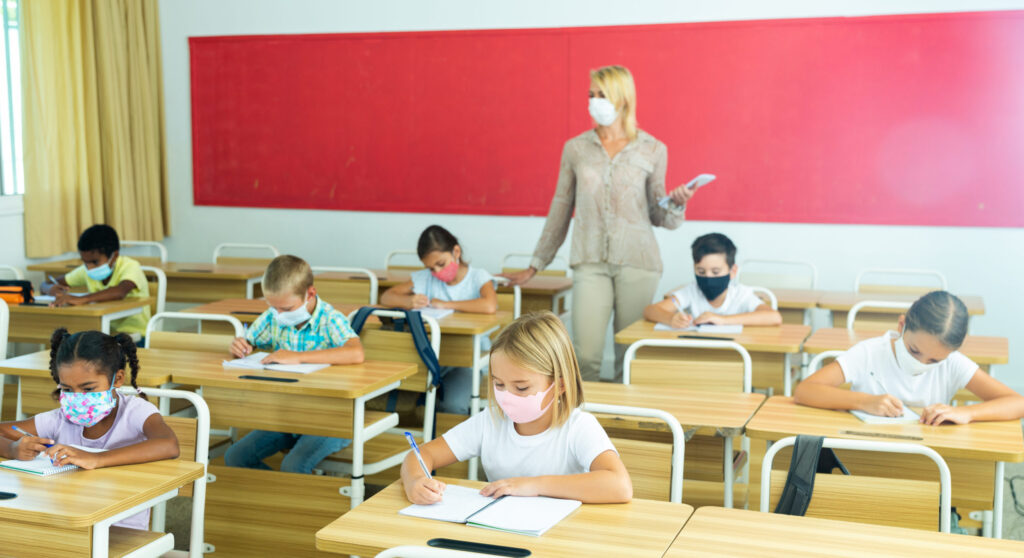Allowing poor air quality in schools isn’t an issue to overlook. Studies have shown that air pollution in both indoor and outdoor spaces can have physical and psychological effects. Among the individuals most vulnerable to these effects are children, due to their developing immune systems. The Massachusetts Institute of Technology (MIT) recently conducted a review of numerous existing studies concerning negative effects of air pollution. They found that air pollution has a number of disastrous effects on health. From these studies, they concluded that air pollution can alter important cognitive brain functions, such as decision making. Air pollution has also been shown to increase levels of annoyance and anxiety. Additionally, high levels of air pollution, such as those found in major cities in China, were shown in one study to reduce an individual’s ability to perform well in both verbal and math tests. These studies are just a few out of the large body of research that has found that air quality can have devastating effects on physical and psychological health of individuals.

There is clearly cause for concern over the impacts of poor indoor air quality in schools. As a current student who has spent many hours in various classrooms, I am familiar with the need for clean and healthy air in school settings. I have lived in California my entire life, a state deeply affected by wildfires. Almost every year, the air outside is filled with smoke from these fires, which is unhealthy to breathe. In situations like this, it is important that the air quality both indoors and outdoors is measured to ensure that students are not breathing unhealthy air. Additionally, many other factors can contribute to air quality not being sufficiently healthy. One culprit is lack of sufficient ventilation. This can increase the concentrations of contaminants in classrooms. More specifically, poor ventilation has been shown to cause large concentrations of particulate matter in classrooms, which is unhealthy to breathe. There are numerous other factors contributing to poor indoor air quality in schools. These include being close to busy roads and cities, chemicals used in cleaning products, pesticides used on lawns around schools, and mold present in buildings. One additional major cause of indoor air pollution in certain parts of the world is smoke from wildfires. The EPA advises that smoke from outdoors can easily enter buildings, and quickly cause the quality of the air to decline. Smoke from wildfires poses an additional threat, as it is made up of extremely small particles that can enter children’s respiratory systems. Natural infiltration from outside, as well as ventilation systems such as fans and heating or cooling systems allow damaging particles from outside to impact indoor air quality. These causes, along with many more, can be responsible for causing air quality to deteriorate in indoor spaces in schools.

An additional component to take into account is the quality of air outside schools. In certain situations, either indoor or outdoor air quality may be significantly healthier. When this arises, it is important to be able to measure where the air quality is better. By doing so, administrators in schools can determine where it is safest for children to be in specific moments. In an environment such as a school, which focuses on learning and development, it is of utmost importance to not allow air quality to negatively impact children. Thankfully, there are steps that can be taken to ensure that the air inside classrooms is safe for those breathing it. As Peter Drucker famously stated, “if you can’t measure it, you can’t improve it.” In the case of school air quality, the most important step to take is measuring the quality of the air in schools. If you are not able to determine what the air quality is, there is no easy path forward to creating a healthier environment in classrooms. Piera’s IPS sensors and Canāree air quality monitors allow you to measure particles present in your air, in order to determine the overall air quality. These sensors can be used to accurately measure indoor air quality. This is because they are able to sense smaller particles, which are often present indoors and can serve as an even bigger threat. By measuring the air quality of the indoor spaces in schools, a deeper understanding can be gained as to just how healthy the air is for students, which can then be acted upon to improve air quality.
Author: Dani Bier — Piera Systems
